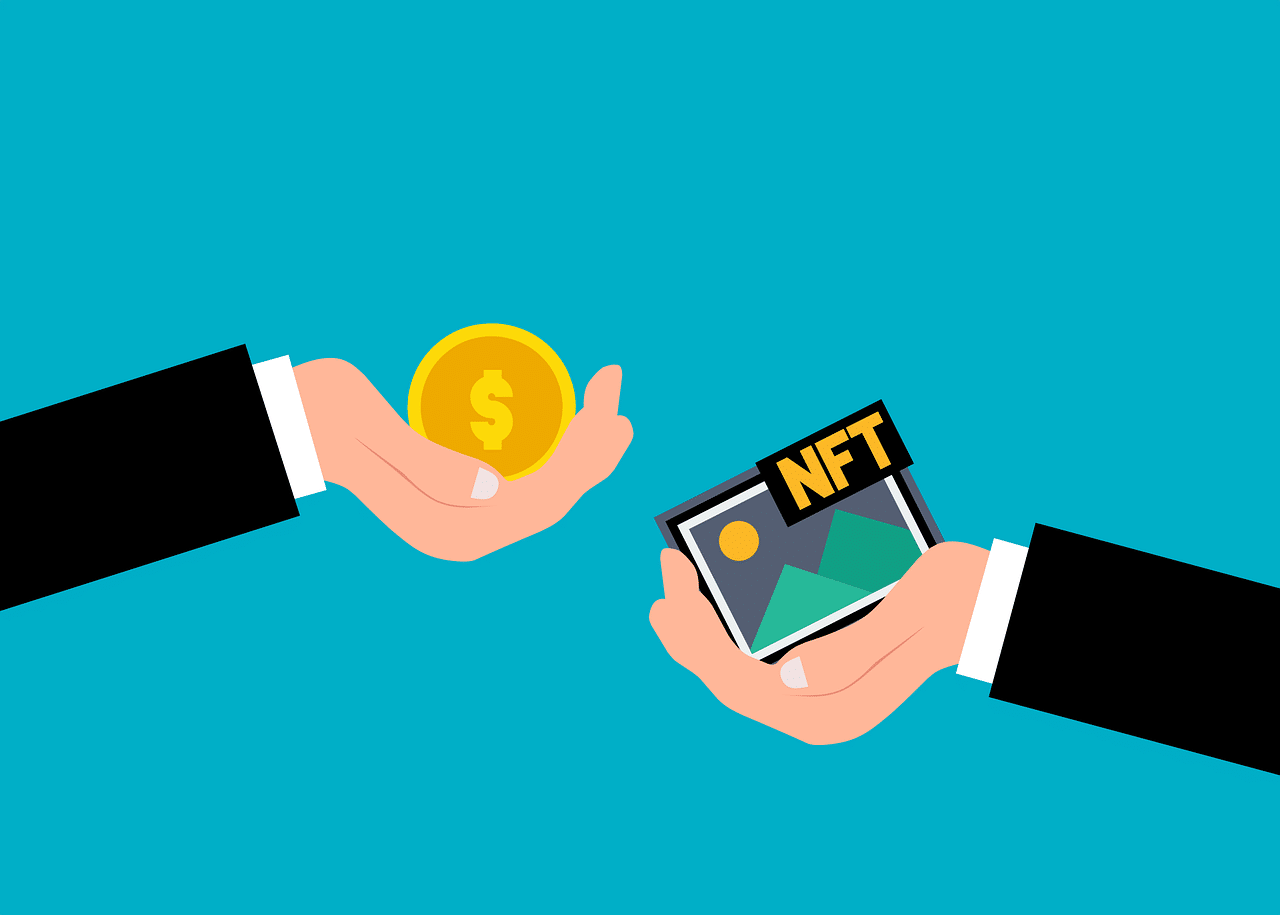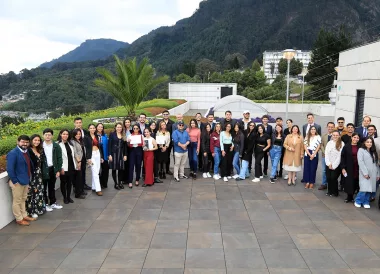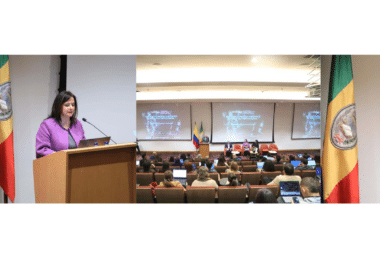2 de agosto de 2023
Non-fungible tokens and art law
INTRODUCTION
Tokens in the digital landscape originated with the advent of blockchain technology and the creation of cryptocurrencies. The first notable token, Bitcoin (BTC), was introduced in 2009 by an anonymous person or group of people using the pseudonym Satoshi Nakamoto. Bitcoin was designed as a decentralized digital currency, operating on a peer-to-peer network without the need for intermediaries.
Bitcoin’s success paved the way for the development of other cryptocurrencies and the concept of tokenization. Tokens expanded the functionality beyond being a mere digital currency and represented a wide range of assets, utilities, and functionalities on blockchain networks.
The introduction of Ethereum in 2015 revolutionized the token landscape. Ethereum introduced a platform that allowed developers to create and deploy smart contracts, which are self-executing contracts with predefined rules encoded on the blockchain. Ethereum’s smart contracts enabled the creation and management of tokens using the ERC-20 standard.
The ERC-20 standard, introduced in 2015, became the most widely adopted token standard on the Ethereum network. It provided a common set of rules and interfaces for creating and managing fungible tokens. Fungible tokens are interchangeable and identical, meaning each token is equivalent to another.
Since then, various other token standards have been developed on different blockchain platforms, including the following:
- ERC-721: Introduced in 2017, the ERC-721 standard enabled the creation of non-fungible tokens (NFTs). NFTs are unique and indivisible, representing ownership or proof of authenticity of a specific item or digital asset.
- BEP-20: Developed for the Binance Smart Chain (BSC), the BEP-20 standard is similar to ERC-20 and allows for the creation and management of tokens on the Binance ecosystem.
- TRC-20: Developed for the TRON blockchain, the TRC-20 standard serves as a technical specification for creating and managing tokens on the TRON network.
- ERC-721C, released in its final version in May 2023, introduces a groundbreaking token standard that enforces on-chain royalties. Unlike the commonly used ERC-721 and ERC1155 standards, ERC-721C enables creators to programmatically enforce royalties, preventing zero-fee exchanges from platforming their works.
These token standards and platforms have facilitated the growth of the token economy, enabling the creation of digital assets, decentralized applications (DApps), and various tokenized ecosystems.
Tokens in the digital landscape emerged with the rise of cryptocurrencies and the development of blockchain technology. They have since evolved to encompass a wide range of use cases, from digital currencies and utility tokens to NFTs and governance tokens, shaping the decentralized digital economy we currently experience.
TOKENS AND BLOCKCHAIN
Tokens and blockchain are closely related concepts in the world of cryptocurrency and decentralized technology.
In the context of blockchain, a token is a digital representation of an asset or utility that exists on a blockchain network. Tokens can represent various things, including cryptocurrencies, digital assets, or even real-world assets like real estate or commodities.
Tokens can serve different purposes within a blockchain ecosystem. They can be used as a medium of exchange, store of value, or a unit of account. Additionally, tokens can also represent ownership, voting rights, access to services, or any other form of digital representation tied to a specific project or platform.
Tokens are typically created and managed through smart contracts, which are self-executing contracts with predefined rules encoded on the blockchain. Smart contracts enable the creation, issuance, and management of tokens, including functionalities like transferring tokens between participants, enforcing rules, and executing actions based on predetermined conditions.
Blockchain is a decentralized, distributed ledger technology that enables secure and transparent record-keeping of digital transactions. It consists of a chain of blocks, where each block contains a set of transactions. These blocks are linked to each other using cryptographic hashes, forming an immutable and tamper-evident chain of data.
The blockchain technology’s key features include decentralization, transparency, immutability, and security. It eliminates the need for a centralized authority or intermediary, as the network participants collectively validate and verify transactions. This decentralization ensures a higher level of trust and removes single points of failure.
Blockchain technology gained popularity with the advent of cryptocurrencies like Bitcoin, where it serves as the underlying technology for recording and validating transactions. However, blockchain has since found applications beyond cryptocurrencies, including supply chain management, healthcare, finance, voting systems, and more.
Crypto tokens are often used to raise funds for projects and are usually created, distributed, sold, and circulated through an initial coin offering (ICO) process, which involves a crowdfunding round.
TOKENS ON THE BLOCKCHAIN
Tokens are often implemented on blockchain platforms as a means of representing and managing digital assets or rights. These tokens can be native to a specific blockchain network, like Ether (ETH) on the Ethereum blockchain, or they can be built on top of existing blockchain platforms through standards like ERC-20 (Ethereum), BEP-20 (Binance Smart Chain), or TRC-20 (TRON).
By utilizing blockchain technology, tokens can benefit from the security, transparency, and decentralization of the underlying blockchain network. The blockchain ensures that token transactions are recorded, verified, and accessible to network participants while maintaining the integrity and security of the data.
Furthermore, blockchain platforms provide an environment for developers to build decentralized applications (DApps) and smart contracts that interact with tokens. These DApps can enable functionalities like token transfers, token swaps, tokenized asset management, decentralized exchanges, and more.
Tokens and blockchain work together to provide a foundation for creating digital assets, facilitating secure transactions, and enabling decentralized applications and ecosystems.
TYPES OF DIGITAL TOKENS
There are various types of digital tokens, each with its own characteristics and use cases. For instance, the following are common types of digital tokens:
- Cryptocurrencies: digital tokens that serve as a medium of exchange and store of value. Examples include Bitcoin (BTC), Ethereum (ETH), Litecoin (LTC), and many others. Cryptocurrencies often function as decentralized currencies independent of any central authority.
- Utility Tokens: tokens that provide access to a specific product or service within a blockchain platform or ecosystem. These tokens are typically used to pay for services, access certain features, or participate in a decentralized network. Examples include Ether (ETH) on the Ethereum network and Binance Coin (BNB) on the Binance Smart Chain.
- Security Tokens: represent ownership in an underlying asset, such as real estate, company shares, or investment funds. These tokens are subject to securities regulations and may provide rights to dividends, profit sharing, or voting privileges. Security tokens aim to digitize traditional financial assets and provide liquidity and efficiency through blockchain technology.
- Stablecoins: tokens designed to minimize price volatility by pegging their value to a stable asset, such as a fiat currency (e.g., USD) or a commodity. Stablecoins provide stability and are often used for trading, remittances, and as a store of value within the crypto ecosystem. Popular stablecoins include Tether (USDT), USD Coin (USDC), and Dai (DAI).
- Non-Fungible Tokens (NFTs): are unique digital assets that represent ownership or proof of authenticity of a particular item, such as art, collectibles, virtual real estate, or in-game items. NFTs leverage blockchain technology to establish verifiable ownership and scarcity. Examples of NFT platforms include Ethereum’s ERC-721 and ERC-1155 standards and Binance Smart Chain’s BEP-721 standard.
- Governance Tokens: grant holders the ability to participate in decision-making processes within a decentralized network or protocol. Token holders can vote on proposed changes, upgrades, or protocol parameters. Examples of governance tokens include Maker (MKR) for the MakerDAO protocol and Compound (COMP) for the Compound protocol. Governance tokens act as the foundation to establish decentralized governance in decentralized autonomous organizations (DAOs), DeFi projects and decentralized applications (DApps). Users who have made significant contributions to the community or have demonstrated loyalty are frequently awarded governance tokens.
Other tokens have a particular use case or function. Examples include Storj tokens, which allow people to share files across a decentralized network, or Namecoin, which provides a decentralized Domain Name System (DNS) service for internet addresses. These are known as utility tokens.
NFTS AND ART
NFTs (Non-Fungible Tokens) have gained significant attention in recent years, particularly in the realm of digital art.
NFTs provide a platform for experimentation and innovation in the art world. The digital nature of NFTs allows for new forms of art that could not exist in the physical world. It also provides opportunities for artists to create and share their work online. NFTs can facilitate collaborations between artists, collectors, and technologists, leading to new forms of creativity and expression. NFTs offer a new and innovative way to promote and sell artwork.
NFTs offer a new level of transparency and provenance to the art market. A NFT is uniquely identifiable on the blockchain, which means that buyers can verify the authenticity and ownership of a piece of digital art. This transparency of the blockchain allows collectors and artists to track the provenance of their works and for artists to potentially earn royalties on future resales.
History of NFTs and Art:
NFTs have their roots in blockchain technology, specifically Ethereum, which introduced the ERC-721 standard in 2017. ERC-721 enabled the creation of unique tokens, allowing for the representation of digital assets that cannot be replicated or exchanged on a one-to-one basis like cryptocurrencies.
The intersection of NFTs and art gained traction in 2017 when CryptoPunks, one of the first NFT projects, was launched. CryptoPunks are 10,000 unique collectible characters with proof of ownership recorded on the Ethereum blockchain.
However, it was in 2020 and 2021 that NFT art exploded in popularity, with several high-profile sales and mainstream recognition. Notable examples include:
Beeple’s “Everydays: The First 5000 Days”: In March 2021, artist Mike Winkelmann, known as Beeple, sold a digital artwork compilation for a staggering $69.3 million at a Christie’s auction. It marked a significant milestone, drawing attention to the potential of NFT art.
CryptoKitties: CryptoKitties, launched in 2017, is a blockchain-based game that allows users to collect, breed, and trade unique virtual cats. It became immensely popular and congested the Ethereum network during its peak.
Art Blocks: Art Blocks is a platform where generative artists can create and sell NFT art pieces. Generative art refers to art created through algorithms and code. Art Blocks has facilitated the creation of numerous unique and algorithmically generated artworks.
NBA Top Shot: NBA Top Shot, developed by Dapper Labs, is an NFT platform that offers collectible moments of NBA basketball games. These moments are tokenized, allowing fans to own and trade highlights like a digital trading card.
Hashmasks: Hashmasks is an NFT art project that combines artwork with on-chain metadata. Each unique digital mask is associated with a randomly generated trait and ownership is verified on the Ethereum blockchain.
These examples highlight the diverse range of NFT art, including digital artwork, collectibles, generative art, and sports-related experiences. NFTs provide artists with new avenues for monetizing their work, establishing verifiable ownership, and creating unique digital assets that can be bought, sold, and traded on various platforms.
Legal issues of NFTs in art:
As the adoption of NFTs (Non-Fungible Tokens) and their intersection with art continues to grow, legal issues and cases have emerged in the realm of NFT art. While the field is still developing, here are a few noteworthy legal cases and considerations related to NFTs and art law:
Copyright Infringement: NFTs can involve the creation and distribution of digital artworks that may be subject to copyright protection. Unauthorized use of copyrighted material in NFT art can lead to copyright infringement claims. Artists need to ensure they have appropriate rights or licenses for the artworks they tokenize.
Plagiarism and Attribution: NFT platforms have encountered instances where artists’ work was allegedly plagiarized or misrepresented by other individuals who minted and sold NFTs of those works. These cases raise questions of attribution, intellectual property rights, and the need for clear documentation and provenance of the original artworks.
Contract Disputes: NFT transactions are often governed by smart contracts. In some cases, disputes may arise regarding the terms of the smart contracts, ownership rights, royalties, or revenue sharing arrangements. These disputes may involve questions about the enforceability and interpretation of smart contract terms.
Authenticity and Provenance: NFTs rely on blockchain technology to establish verifiable ownership and provenance. However, challenges can arise if the underlying artwork or digital asset’s authenticity is called into question. Cases may emerge where the original artist disputes the authenticity or origin of an NFT representing their work.
Shortly after the sale of the NFT artwork “Crossroads” by artist Beeple for $6.6 million, an individual claimed ownership of the original artwork from which the NFT was derived. This case highlighted the importance of verifying the authenticity and provenance of the underlying physical artwork when tokenizing it as an NFT.
Rights of Physical Artwork vs. NFT: In situations where physical artwork is tokenized as an NFT, legal issues may arise regarding the rights and ownership of the physical artwork versus the NFT representation. Questions may arise about whether the NFT owner possesses rights to the physical artwork or if the original artist retains those rights.
The legal landscape surrounding NFTs and art law is still evolving, and specific cases and legal precedents are limited. The legal implications of NFTs involve aspects of intellectual property law, contract law, copyright law, and more. As the technology and industry continue to develop, legal frameworks and regulations are likely to adapt to address the unique challenges and opportunities presented by NFTs and their intersection with art.
CONCLUDING REMARKS
To conclude, NFTs have the potential to reshape the art industry and offer new opportunities for artists and collectors. Here are a few points to consider:
- Increased Accessibility: NFTs have provided digital artists with a way to authenticate and monetize their work in a decentralized manner. Artists can directly sell their art on various platforms without relying on traditional gatekeepers like galleries or auction houses. This increased accessibility can empower emerging artists and democratize the art market.
- Verifiable Ownership and Provenance: NFTs utilize blockchain technology to establish verifiable ownership and provenance of digital assets. This can help address issues of copyright infringement, forgery, and provenance challenges that have traditionally plagued the art market. Collectors can have confidence in the authenticity and origin of the digital art they acquire.
- New Revenue Streams: NFTs introduce the potential for artists to earn royalties or revenue from the resale of their artwork in the secondary market. Through smart contracts, artists can program a percentage of each subsequent sale to be automatically paid to them. This offers a unique opportunity for artists to benefit from the increasing value of their work over time.
- Digital Collectibles and Interactivity: NFTs have opened up possibilities for digital collectibles, allowing collectors to own and trade unique digital assets like virtual art, virtual real estate, or in-game items. Additionally, NFTs can incorporate interactive elements, enabling artists to create dynamic and evolving digital experiences.
- Challenges and Considerations: While NFTs present exciting opportunities, challenges and considerations remain. These include issues related to copyright, intellectual property, environmental concerns (due to the energy consumption of certain blockchain networks), and the sustainability of the NFT market’s current hype.
Artículos Recientes
¡Ya está disponible el caso! Segunda versión del Concurso Laboratorio de Estrategia Legal #LSL
Invitamos a los estudiantes de pregrado y postgrado de todas las carreras a presentar [...]
Masterclass Legal Operations: Transformando la Función Legal Empresarial de Guardián de Riesgos a Creador de Valor.
El Departamento de Derecho de los Negocios y la Facultad de Administración de Empresas [...]
Conclusión del Proceso de Reforma al Investor-State Dispute Settlement
En la semana del 12 de julio de 2023, durante la sesión anual de [...]
El Departamento de Derecho de los Negocios de la Universidad Externado de Colombia abre convocatoria para la vacante de Asistente de Investigación
¡Sé parte de nuestro equipo de trabajo! Perfil del cargo: Asistente de Investigación Apoyar [...]
Docente del Departamento de Derecho de los Negocios participó en el libro Blanco de la Asociación de Derecho Internacional
La Asociación de Derecho Internacional (ADI), una de la organizaciones más antiguas y prestigiosas [...]
CRYPTO IN COLOMBIA: PROSPECTIVE 2022
By: Daniel Peña Valenzuela The volatility of the main cryptocurrencies seems to be once [...]
Convocatoria de Monitores.
El Departamento de Derecho de los Negocios se complace en anunciar la apertura para [...]
¿Se avecina una regulación de la Franquicia por parte del Gobierno? ¿O lo impedirá la Corte Constitucional?
Por: Juan Miguel Álvarez* y Diana Marcela Araujo* En diciembre del 2020, el congreso [...]
Ciclo de seminarios de Innovaciones en Justicia Digital: un espacio desde la academia que replantea el futuro del sistema de justicia.
El Seminario en Innovaciones en Justicia Digital es un evento de la Universidad Externado [...]
Rostros de mentira: Retos legales producidos por las ‘Deepfakes’
Palabras clave: Deepfake, IA, contenidos audiovisuales, redes generativas adversarias, derecho probatorio, intimidad personal. Una [...]
Memorias: Tercer seminario de innovaciones en la justicia digital- aplicaciones de la inteligencia artificial en la práctica judicial.
El pasado 19 de septiembre de 2024, las instalaciones de la Universidad Externado fueron [...]
Celebramos la realización del 40º Congreso Nacional de Derecho Comercial: Novedades y retos de la contratación mercantil y del arbitraje comercial
El pasado 30 de octubre, en Medellín, se celebró el 40º Congreso Nacional de [...]


















